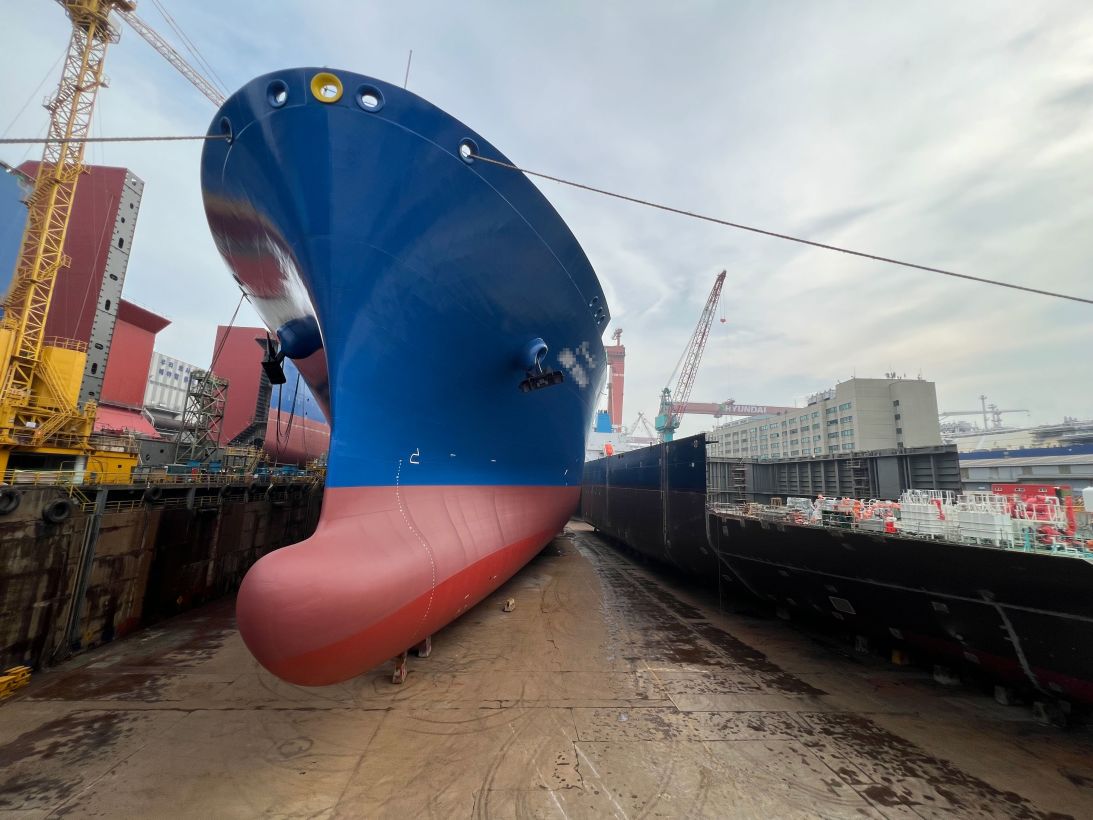World
South Korean Shipbuilders Offer Solutions for US Navy Crisis

The US Navy faces significant challenges in its shipbuilding programs, a situation that has prompted leaders at two South Korean shipyards to offer their expertise. With US President Donald Trump advocating for a revitalization of American shipbuilding, companies such as HD Hyundai Heavy Industries in Ulsan and Hanwha Ocean in Geoje believe they can help address the crisis.
During a recent hearing, John Phelan, the US Secretary of the Navy, described the state of shipbuilding as alarming. He stated, “All of our programs are a mess. I think our best one is six months late and 57% over budget.” This admission reflects a longstanding struggle within US shipbuilding, which has been plagued by delays and cost overruns for years.
In contrast, South Korean shipyards have established themselves as leaders in the industry, consistently delivering high-quality vessels on time and within budget. A CNN visit to the Hyundai and Hanwha facilities revealed a commitment to efficiency and innovation. At Hanwha’s yard, officials showcased new structures designed for a contract involving four advanced frigates for the South Korean navy. Each of these 122-meter-long, 3,100-ton vessels will be equipped with vertical launch systems for air defense missiles and can deploy anti-ship missiles as well as anti-submarine torpedoes. Remarkably, these ships are expected to be completed in about three years, a timeline comparable to the delays affecting the US Navy’s Constellation-class frigate program.
So, what enables South Korean shipbuilders to operate so effectively? According to leaders at these shipyards, the combination of experienced workforce and streamlined logistics plays a crucial role. Lee Jin, vice president at HD Hyundai Heavy Industries, noted that the average worker at the facility has been with the company for 16 years, contributing to a stable and skilled labor force.
Adding to this, Sal Mercogliano, a shipping expert and professor at Campbell University, pointed out that South Korean shipyards skillfully balance military and commercial projects. This flexibility allows them to maintain a core group of skilled workers, adapting to market demands without losing expertise.
The US, on the other hand, has faced challenges since outsourcing much of its commercial shipbuilding to countries like South Korea and Japan post-World War II. President Trump remarked on this lost capacity, stating, “We really gave up the shipbuilding industry foolishly, many years ago.”
In an effort to bridge this gap, South Korean companies are actively looking to expand their presence in the US market. Hanwha Ocean has made significant investments, including a recent acquisition of Philly Shipyard in Pennsylvania, with plans to inject $5 billion into the facility to support both commercial and military initiatives. Similarly, Hyundai Heavy Industries is exploring opportunities for a more substantial US footprint.
Despite the potential for collaboration, US regulations currently restrict the Navy from purchasing foreign-built ships or constructing them abroad. This presents a significant barrier to deepening US-South Korean cooperation. Recent tensions, including immigration issues affecting a Korean battery plant in Georgia, have raised concerns about the future of this partnership.
While there has been some movement towards international collaboration, such as a recent agreement between the US and Finland for the construction of Coast Guard icebreakers, the path for military shipbuilding remains complex. Mercogliano suggested that Congress might consider easing restrictions on commercial vessels, paving the way for increased shipbuilding capabilities in South Korea that could eventually transition to the US.
The potential for US warships to be manufactured in South Korea raises a pivotal question about the future of American shipbuilding. When asked if he envisions US warships being built at the Geoje shipyard, Hanwha’s Jeon Yu-su responded affirmatively, indicating a strong desire to contribute to the US Navy’s modernization efforts.
As the US Navy grapples with its shipbuilding crisis, the expertise and capabilities of South Korean shipbuilders could play a critical role in shaping the future of naval defense in the Pacific.
-

 Lifestyle5 months ago
Lifestyle5 months agoLibraries Challenge Rising E-Book Costs Amid Growing Demand
-

 Sports4 months ago
Sports4 months agoTyreek Hill Responds to Tua Tagovailoa’s Comments on Team Dynamics
-

 Sports4 months ago
Sports4 months agoLiverpool Secures Agreement to Sign Young Striker Will Wright
-

 Lifestyle4 months ago
Lifestyle4 months agoSave Your Split Tomatoes: Expert Tips for Gardeners
-

 Lifestyle4 months ago
Lifestyle4 months agoPrincess Beatrice’s Daughter Athena Joins Siblings at London Parade
-

 Science4 months ago
Science4 months agoSan Francisco Hosts Unique Contest to Identify “Performative Males”
-

 World4 months ago
World4 months agoWinter Storms Lash New South Wales with Snow, Flood Risks
-

 Science5 months ago
Science5 months agoTrump Administration Moves to Repeal Key Climate Regulation
-

 Business5 months ago
Business5 months agoSoFi Technologies Shares Slip 2% Following Insider Stock Sale
-

 Science5 months ago
Science5 months agoNew Tool Reveals Link Between Horse Coat Condition and Parasites
-

 Sports5 months ago
Sports5 months agoElon Musk Sculpture Travels From Utah to Yosemite National Park
-

 Science5 months ago
Science5 months agoNew Study Confirms Humans Transported Stonehenge Bluestones









